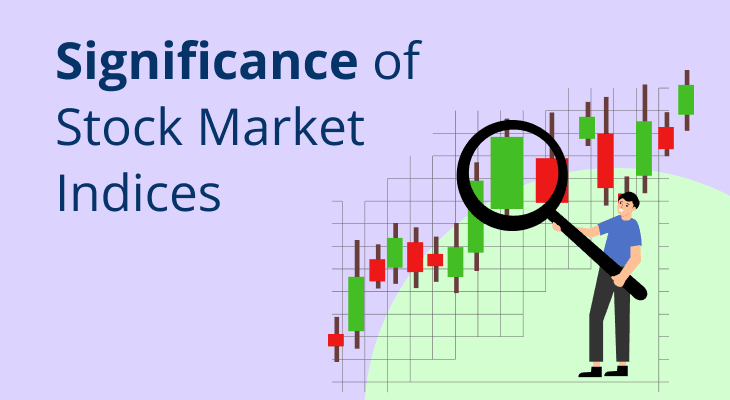
An Explanation of Dow Theory in Technical Analysis
Investors and traders are always looking for ways to beat market’s average returns, maximise their profits, and minimise their risks. As such, there are several theories in existence as an attempt to explain or understand the behaviour and performance of the stock market. These theories have been proposed over time by economists, academics, and investors to explain how the stock market works and how it affects the broader economy. One such prominent hypothesis is the Dow Theory, which has withstood the test of time and market volatility for well over a century. Let’s familiarise you with it, how it works, and how it can benefit you in your trading journey.
The Origins of the Dow Theory
Before you understand the theory, you must know the credentials of the person who first proposed it. Charles H. Dow was an American journalist and founder of Dow Jones & Company, which publishes The Wall Street Journal and created the Dow Jones Industrial Average (DJIA). With such stellar credentials, it is easy to understand why the Dow Theory which he developed with fellow journalist Edward Jones (around 1900 - 1902), is considered one of the foundational principles of technical analysis and is still followed by many investors today.
As per the Dow Theory, the stock market can serve as a reliable source of measurement for the prevalent conditions within an economy. By doing a technical analysis of the overall market, investors can accurately gauge those conditions and identify the direction of the market swings and predict the movement of stock prices.
Dow theory in stock market
Dow Theory surmises that the stock market, as a whole, is a reflection of the overall health and performance of the economy. It consists of six key principles:
The market has three key reflective trends. The primary trend, which can last for several years, represents the overall direction of the market. The secondary trend, which lasts for a few weeks to a few months, is a correction against the primary trend. The minor trend, which lasts for a few days to a few weeks, is a short-term fluctuation within the secondary trend.
The primary trend, in itself, has three phases. The accumulation phase, in which most seasoned investors buy stocks at bargain prices, the public participation phase, in which the market gains momentum as more investors join in, and the excess phase, in which stocks are sold to other not-so-experienced investors. This is true for a bear market. In the case of a bull market, the first phase is the distribution phase which propagates the news of a decline, the public participation phase where investors start exiting their positions, and the panic phase in which people lose hope of a trend reversal.
Volume should increase as the primary trend gains momentum and decrease during corrections, thereby confirming the trend.
A trend is assumed to be in place until there is a clear signal that it has reversed. Traders need to rely on solid evidence that confirms a trend reversal.
The Dow Jones Industrial Average and the Dow Jones Transportation Average should move in the same direction to confirm a trend. Indices that move in opposite patterns cannot confirm the existence of a trend.
All information that could affect a stock's price is already reflected in its current price.
Other notable aspects
While the question “What is Dow Theory?” has been concisely answered in the previous section, there are other important elements that govern this premise. Here’s what you need to know.
The Dow Theory in technical analysis was developed using the closing prices of stocks. It did not take into account the intraday movements of the stock or the overall index.
The Dow Theory emphasised the concept of line ranges a.k.a trading ranges and the use of trend lines and support/resistance levels to identify changes in market sentiment and predict future market movements.
The peak-and-trough analysis is another important tenet of the theory where peak is the highest price of the market in the time frame considered and the trough is the lowest. Consistently high peaks and troughs signify an upward swing while the opposite is an indicator of a bear market.
Both the key indices need to confirm the trend. So if one of the indices, let’s say the Dow Jones Industrial Average (DJIA) shows a consistent upward trend, then you observe the Dow Jones Transportation Average (DJTA). If it, too, shows an upswing then the trend can be confirmed.
The upward or downward trend will continue unless there is clear evidence of a reversal in the form of a break in the market reaching successive (high or low) peaks and troughs. A consistent break in the pattern can be considered a formal reversal.
To wrap things up, while the Dow theory in the share market was developed in the late 19th century, it is still considered relevant in modern markets. The principles of the theory continue to be used by technical analysts to identify trends and confirm market sentiment. It can be used in conjunction with a variety of technical indicators, including moving averages, relative strength indicators, and momentum oscillators. These indicators can help traders and investors identify potential entry and exit points within the larger market trend identified by the Dow Theory in technical analysis.
FAQ
What is the primary purpose of Dow theory?
The main purpose of the Dow Theory is to identify trends in the stock market and determine the overall health and direction of the market. The theory aims to help investors and traders make informed decisions by providing a framework for analysing market trends and identifying potential buying and selling opportunities.
What are the three main trends of Dow theory?
The Dow Theory focuses on identifying three main trends in the stock market namely,
Primary trend: This is the main trend in the stock market that can last for several months to several years. The primary trend is usually bullish or bearish and is identified by analysing the movement of the Dow Jones Industrial Average and the Dow Jones Transportation Average.
Secondary trend: This is a shorter-term trend that lasts several weeks to several months and often results in a market correction of the underlying stocks and overall indices.
Minor trend: This is the shortest-term trend and is often caused by daily or intraday fluctuations in the market affected by news events, economic data releases, and other short-term factors.
How do the principles of Dow theory apply to individual stocks?
The principles of the Dow Theory in the share market can be applied to individual stocks in the same way they are applied to the broader market. By analysing price charts, you can identify trends in individual stocks and confirm market sentiment. The Dow Theory can also be used to identify potential turning points in individual stocks and to determine the overall health of specific sectors of the market.


